This information describes how to do intermediate bed exercises that will increase your strength and help you move more freely.
You may need to modify or skip some of the exercises if you have certain conditions, such as:
- Blood clots
- Broken bones
- Weakened bones
- Recent surgery on your spine, arms, or legs
Your healthcare provider will tell you which exercises you can do. If you have any concerns, talk with your healthcare provider.
You should also tell your healthcare provider if you have new or increased pain while you’re doing these exercises. You should feel no more than slight strain as you do them. They shouldn’t cause pain.
If you have chest pressure, dizziness, or shortness of breath, stop doing the exercises. Call 911 if your symptoms don’t stop after you rest.
Intermediate Bed Exercise Tips
- Try to do the exercises for 30 seconds.
- If you need to stop before 30 seconds, that’s OK. Just be ready to start the next exercise on time.
- You should rest for 30 seconds before you start each exercise.
- Breathe in through your nose and out through your mouth while exercising.
- Don’t hold your breath. Count out loud to keep your breaths evenly paced.
- If you’re in a hospital bed, raise the head of the bed. Then place pillows behind you.
- If you’re at home, place pillows behind you.
Exercise Items
You should have the following items nearby before you start the exercises:
- Socks
- Pillow
Combined Ankle Pump and Quadriceps Set
- Lie back with your head and shoulders supported on pillows.
- Point your right toes up toward your nose and push the back of your right knee down into the bed while tightening the muscles on the top of your thigh (see Figure 1).
- Hold the position and count out loud to 3. Then relax.
- Repeat with your other leg.
- Repeat steps 2 to 4 for 30 seconds, if you can.
- If you’d like to challenge yourself, you can do this exercise with both legs at the same time.
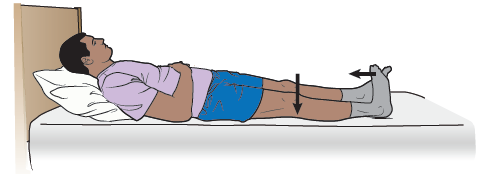
Figure 1. Combined Ankle Pump and Quadricep Set
Modified Straight Leg Raises
- Lie back with your head and shoulders supported on pillows.
- Bend your left leg. Place your foot flat on the bed (see Figure 2).
- Keeping your right leg straight, lift it from the bed until your knees are even with each other (see Figure 2). If you can’t lift your leg that high, lift it as high as you can.
- Slowly lower your right leg onto the bed. Relax your leg.
- Switch your legs and repeat the exercise.
- Repeat steps 2 to 5 for 30 seconds, if you can.
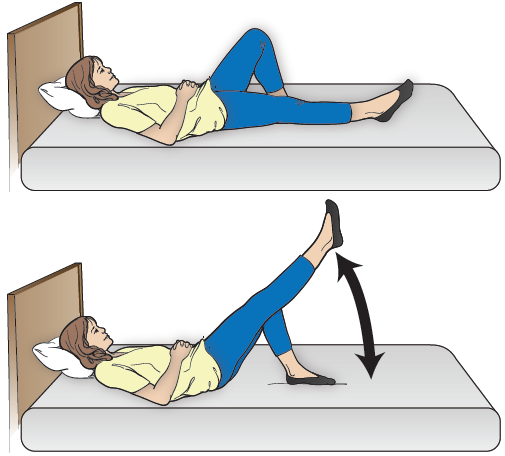
Figure 2. Modified Straight Leg Raises
Advanced Buttock Squeezes
- Lie back with your head and shoulders supported on pillows.
- Straighten your legs as much as you can.
- Press the back of your head, your upper back, and your heels into the bed, as you squeeze your buttocks together tightly. You should almost feel like you are trying to stand straight (see Figure 3).
- Hold the position and count out loud to 3.
- Relax.
- Repeat steps 2 to 5 for 30 seconds, if you can.
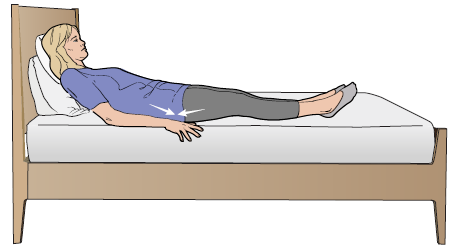
Figure 3. Advanced Buttock Squeezes
Hooklying Trunk Twist (Knee Roll)
If you have pain in your back or hips or had recent surgery, ask your healthcare provider if you can do this exercise.
- Lie back with your head and shoulders supported on pillows.
- Bend your legs. Place your feet flat on the bed.
- Lower your knees to the right side as far as you comfortably can. Hold the position for 1 second. Then return to the starting position. Your movement should be gentle, steady, and slow (see Figure 4).
- Lower your knees to your left side as far as you comfortably can. Hold the position for 1 second. Then, return to the starting position.
- Repeat steps 2 and 3 for 30 seconds, if you can.
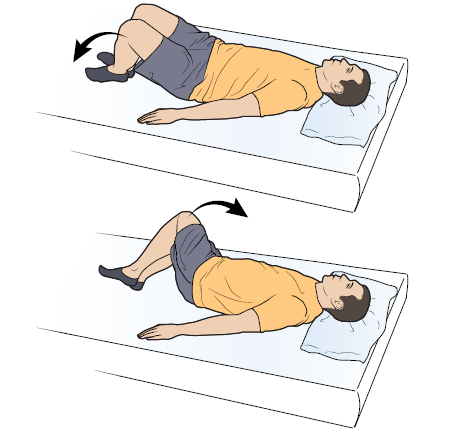
Figure 4. Hooklying trunk twist (knee roll)
Crossbody Reach with Bedrail Grab and Pull
If you have spine, shoulder, or arm pain, ask your healthcare provider if you can do this exercise.
- Lie back with your head supported on pillows.
- Bend your right elbow. Then reach across your body to the left. If you’re in the hospital, try to grab the bedrail on the left side and pull yourself toward it. If you’re at home, try to touch the bed on your left side (see Figure 5).
- Return your right arm to your right side.
- Repeat with your left arm.
- Repeat steps 2 to 4 for 30 seconds, if you can.
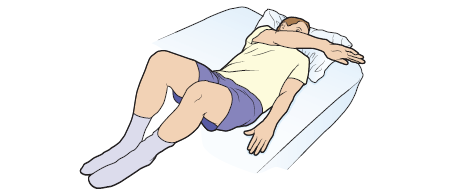
Figure 5. Crossbody Reach with Bedrail Grab and Pull
Ceiling Press
- Lie back with your head and shoulders supported on pillows.
- Bend your knees. Place your feet flat on the bed.
-
Turn your palms face up and touch your shoulders (see Figure 6).
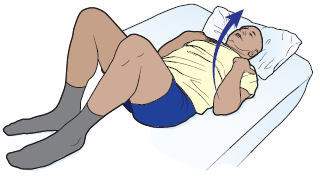
Figure 6. Ceiling Press
-
Straighten your elbows as you press your arms up toward the ceiling as far as you can (see Figure 7).
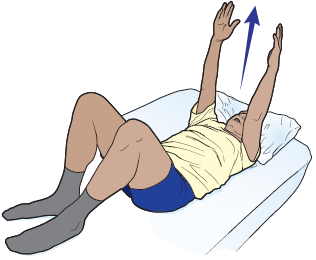
Figure 7. Ceiling Press
-
Return your hands (palms facing down) and arms to your sides. Relax (see Figure 8).
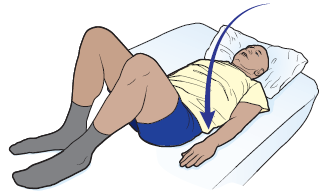
Figure 8. Ceiling Press
- Repeat steps 2 to 5 for 30 seconds, if you can.
Overhead Chest Wall Stretch and 4-8-8 Breathing
- Lie back with your head and shoulders supported on pillows.
- Place your arms close to your sides. Raise your arms forward and up over your head (see Figure 9). Slowly raise your arm while you breathe in for 4 seconds.
- Hold your breath for 8 seconds, if you can. Keep your arms on the pillow so they’re near your ears (see Figure 9).
- Breathe out through pursed lips (like blowing out candles) for 8 seconds as you lower your arms.
- Repeat 3 times, if you can.
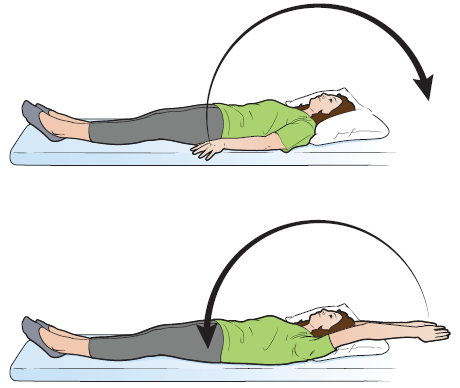
Figure 9. Overhead Chest Wall Stretch and 4-8-8 Breathing